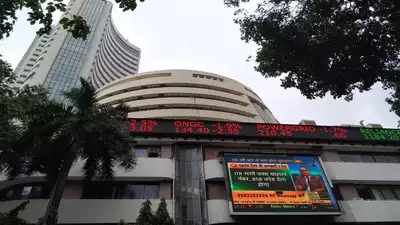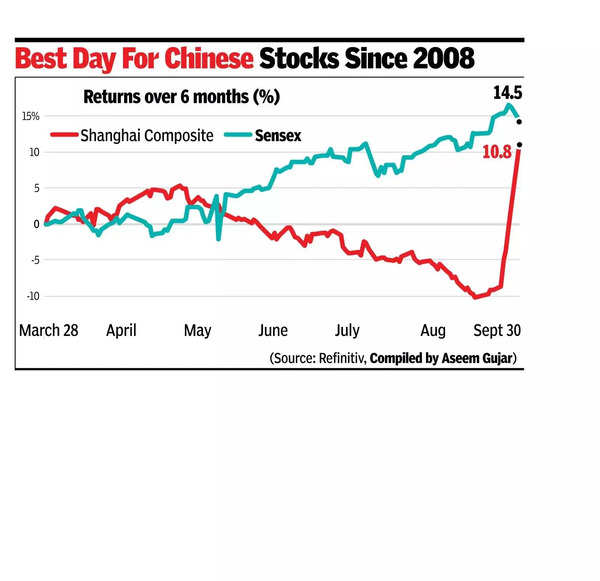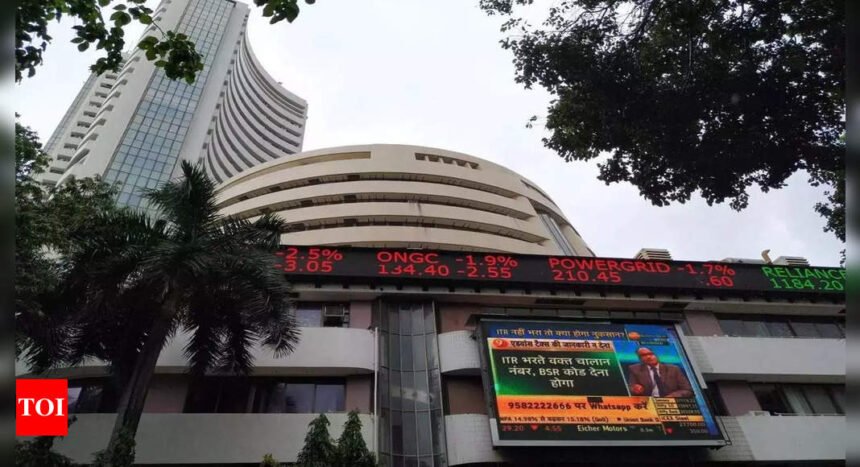[ad_1]

MUMBAI: There was a sharp selloff on Dalal Street on Monday with the sensex and Nifty both sliding nearly 1.5%, marking their steepest single-day drop since Aug 5.
The sensex opened 363 points lower, following a crash in Japan’s Nikkei, and remained under pressure throughout the day as global investor focus shifted to China after Beijing’s new stimulus measures.Rising geopolitical tensions with Israel stepping up strikes in Lebanon too unsettled investors.
The sensex ended the day down 1,272 points at 84,300, while Nifty closed at 25,811, logging a 368-point decline. Investors continued to book profits, particularly in the key IT and financial sectors, contributing to the market’s downturn.

Out of the major sectors, 12 of 13 closed in the red, with financial services stocks dropping 1.7%, IT stocks falling 0.9%, and Reliance Industries slumping 3.3%, reversing gains from its prior two sessions. Reliance’s decline alone wiped out Rs 66,820 crore from its market valuation. The market capitalisation of BSE-listed firms fell by Rs 3.6 lakh crore to Rs 474.4 lakh crore. The metals index, however, stood out, rising 1.3% for the seventh straight session, buoyed by rising global prices and stimulus measures from China.
On Monday, Japan’s Nikkei 225 index dropped nearly 5%, while the Shanghai Composite surged 8% on fresh stimulus announcements, further influencing investor behaviour. Japanese markets crashed as the incoming PM, Shigeru Ishiba is seen as a monetary hawk supporting a stronger Yen, which is negative for trade and markets. With a Sebi board meeting scheduled for Monday, markets were rife with rumours on the action the regulator would take. These included a curb on futures and options trade which could hit market liquidity.
“Despite the downturn, sectors like consumer durables and automobiles may see increased demand during the upcoming festive season, although rising inflation could temper growth. Attention will also be on key economic data releases in the coming weeks, including: Infrastructure Output, Current Account Balance, Manufacturing PMI, WPI Inflation. Additionally, upcoming RBI policy decisions could significantly influence market direction.” Said Vikram Kasat of Prabhudas Lilladher.
The rupee dropped 0.1% against the dollar on Monday, closing at 83.79, down from its previous close of 83.7. The decline was driven by dollar demand from foreign banks. Despite Monday’s fall, the rupee posted its best month since June, gaining 0.1% for the month. Foreign inflows into Indian stocks and bonds, totalling nearly $11 billion in Sept, helped strengthen the rupee over the month, marking the highest net monthly inflows on record.
[ad_2]
Source link




